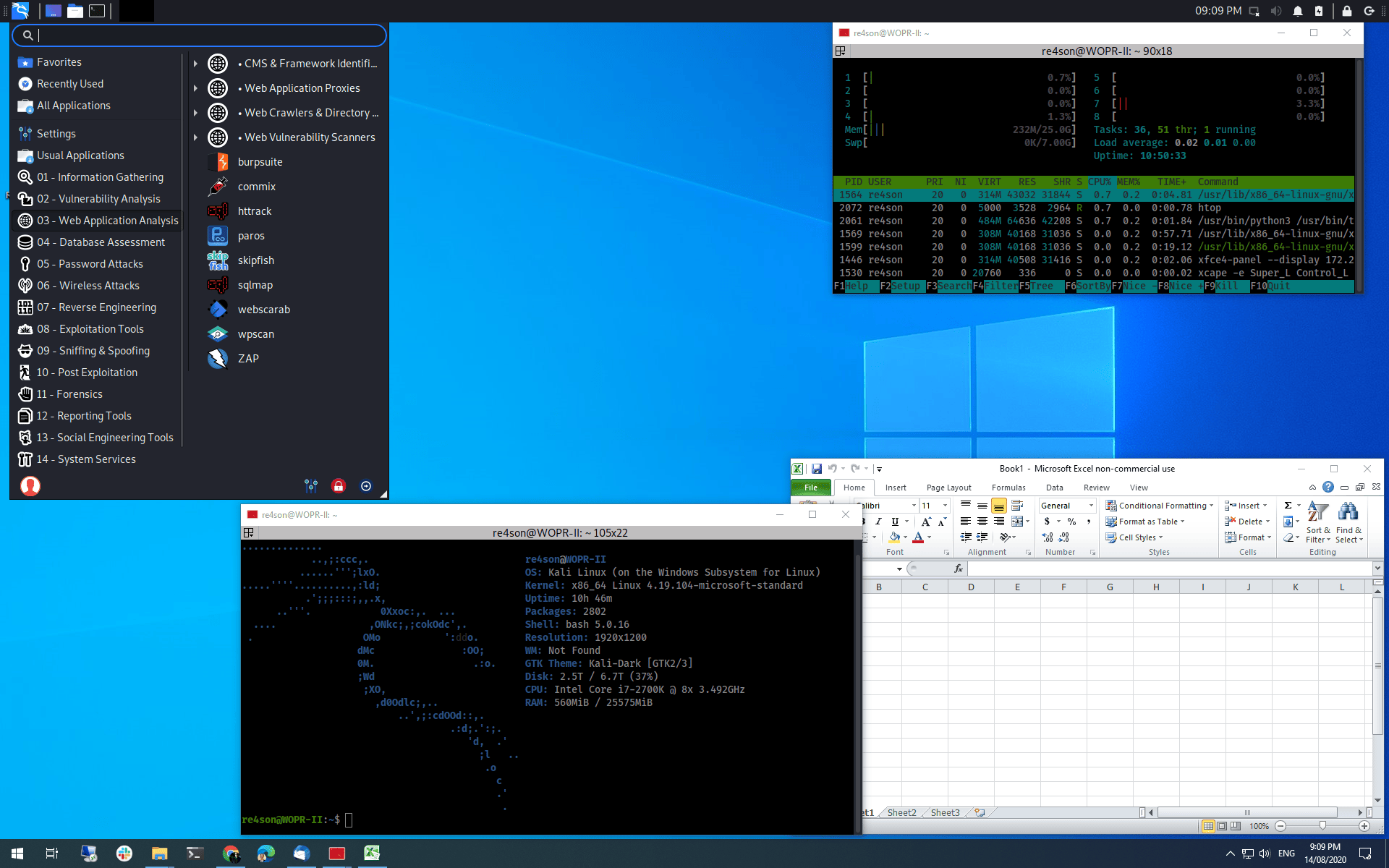
For some time, installing Kali Linux on VirtualBox was the easiest way to use this hacking distribution inside Windows. But that has changed with Kali Linux being available in Windows Store directly.
On March 2018, Microsoft announced the availability of Debian and Debian-based hacking distribution Kali Linux on Windows Subsystem for Linux. You can download these two distributions from Microsoft Store and install them like any other Windows 11/10 application. This way, you get the command line version along with possible GUI tools, of these Linux distributions.
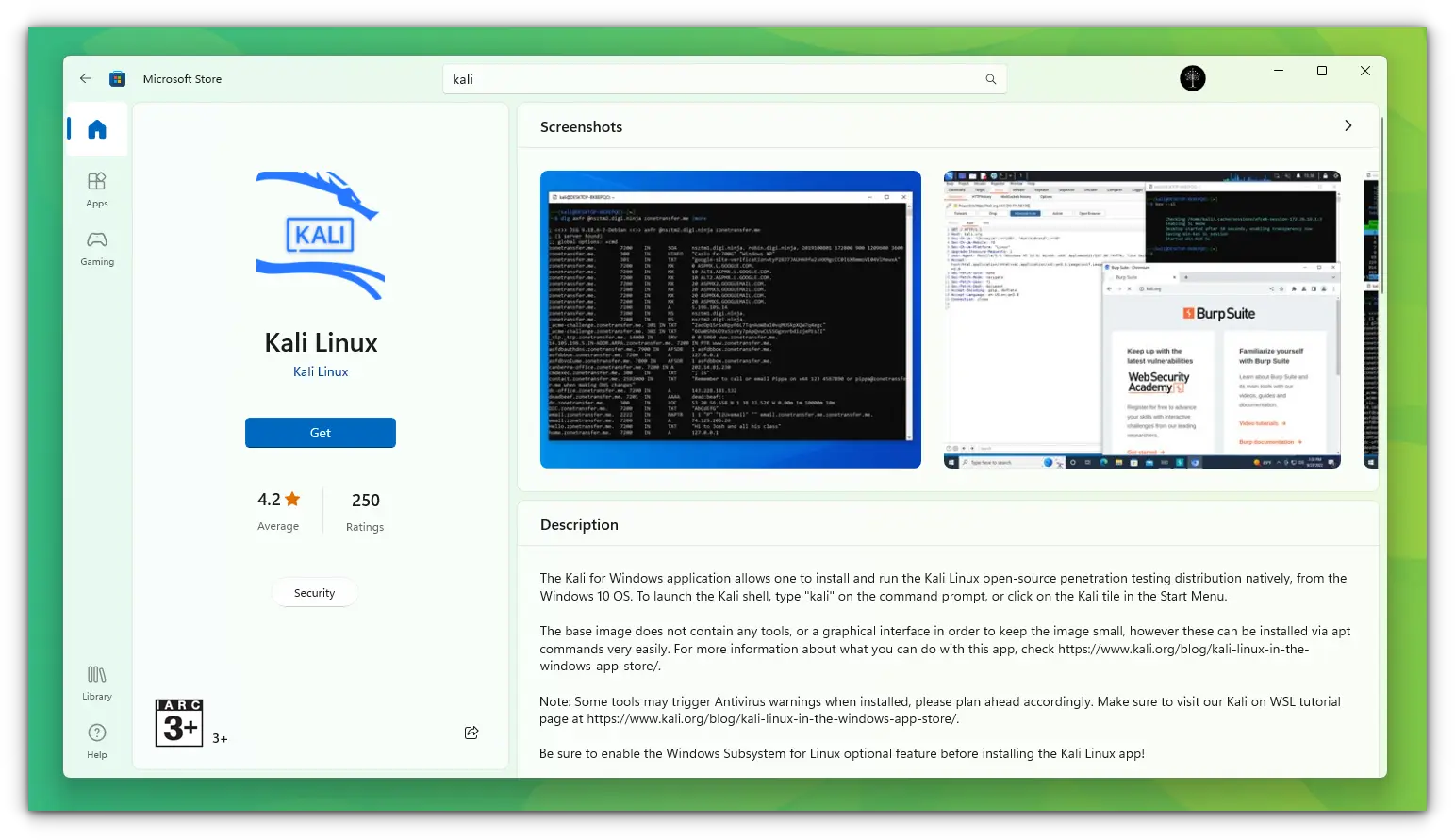
To install Kali Linux in Windows, you should be running either Windows 10 or Windows 11. Please read our article on how to set up WSL 2 and install Linux distributions in Windows, for a quick overview of the requirements and initial setup.
Install Kali on Windows 11 and Some Windows 10 Machines
In Windows 11 or some of the latest builds of Windows 10, installing Kali Linux or any other Linux distribution is a straightforward process. Go to the Microsoft store and install Windows Subsystem for Linux application.
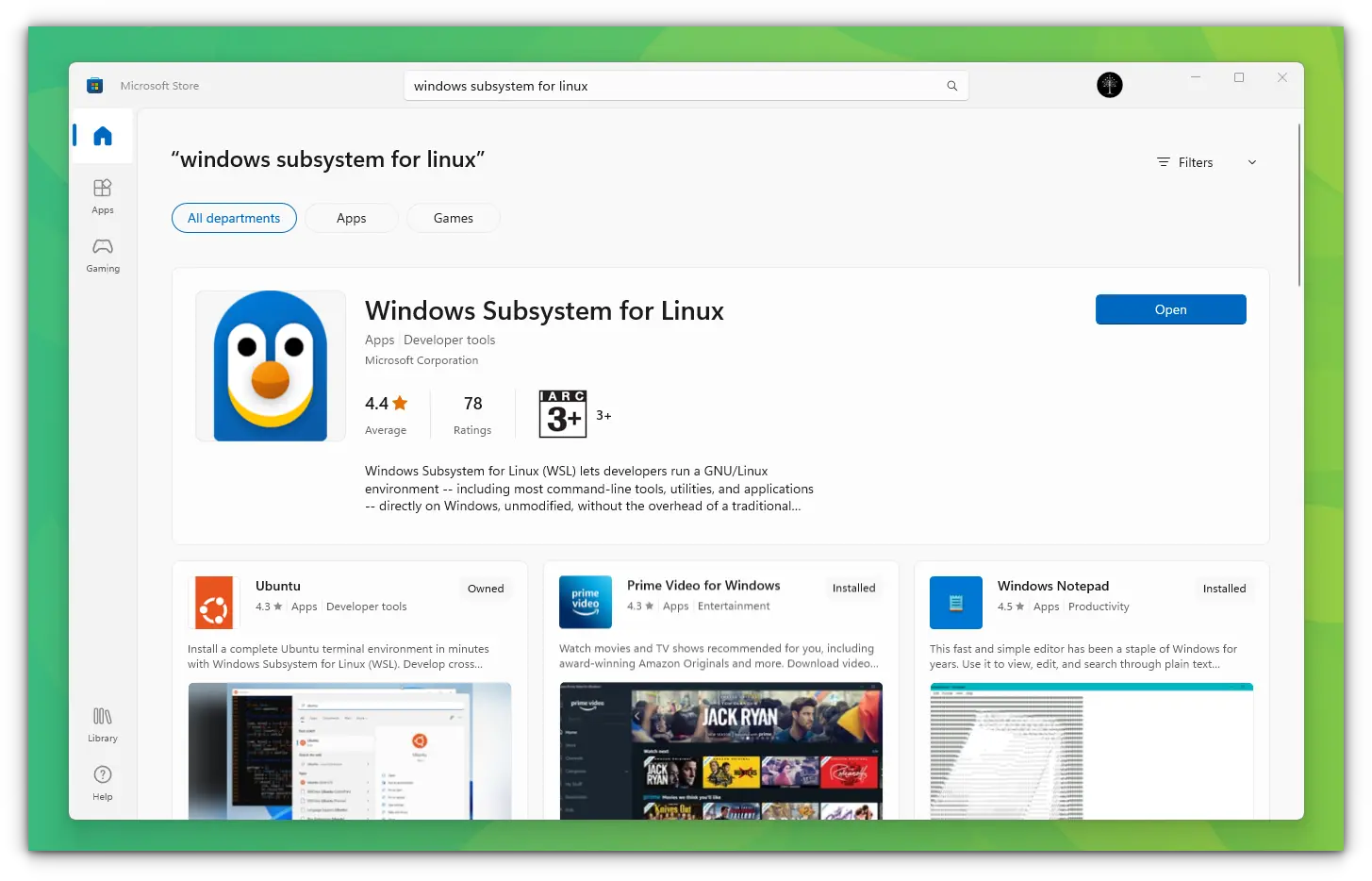
There is a version of Kali Linux available to install via Powershell, but that is not recommended. So, you need to go to the Microsoft store and install Kali Linux as an application as shown in a previous screenshot.
Once done, open the Kali Linux application. It will show some installation progress and after that, you will be able to create your UNIX username and Password.
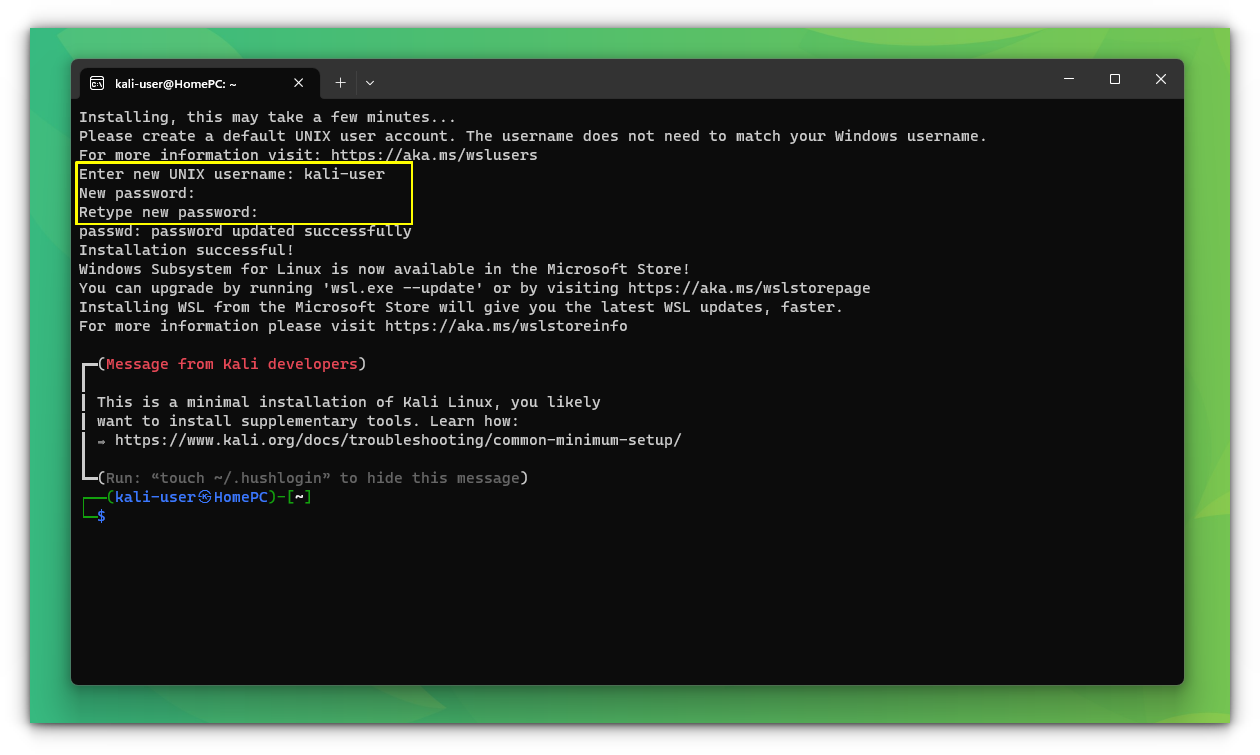
Now, is a minimal installation. You need to update your Kali system with the command:
sudo apt update
sudo apt upgrade
This will download and install the necessary and available updates.
Run GUI apps with Kali Linux
Kali Linux offers a special package, called win-kex, which supports the GUI apps in Windows. Mainly, it offers three modes:
- Window Mode
- Enhanced Session Mode
- Seamless mode
To access these features, open Kali Linux and Run the command below:
sudo apt update
sudo apt install -y kali-win-kexThis will download and install quite a big number of packages. Wait for some time to complete the installation.
Once the package download is complete, it will ask for your language. Choose appropriately.

It will again start the installation process. When everything is finished, you can restart the Kali instance. By now, you will be able to notice the apps and other software, installed under the “Kali Linux” folder in your start menu.

You can open the apps, like those native apps in windows. See the below screenshot, where a Firefox ESR and mousepad editor are opened in Windows 11:
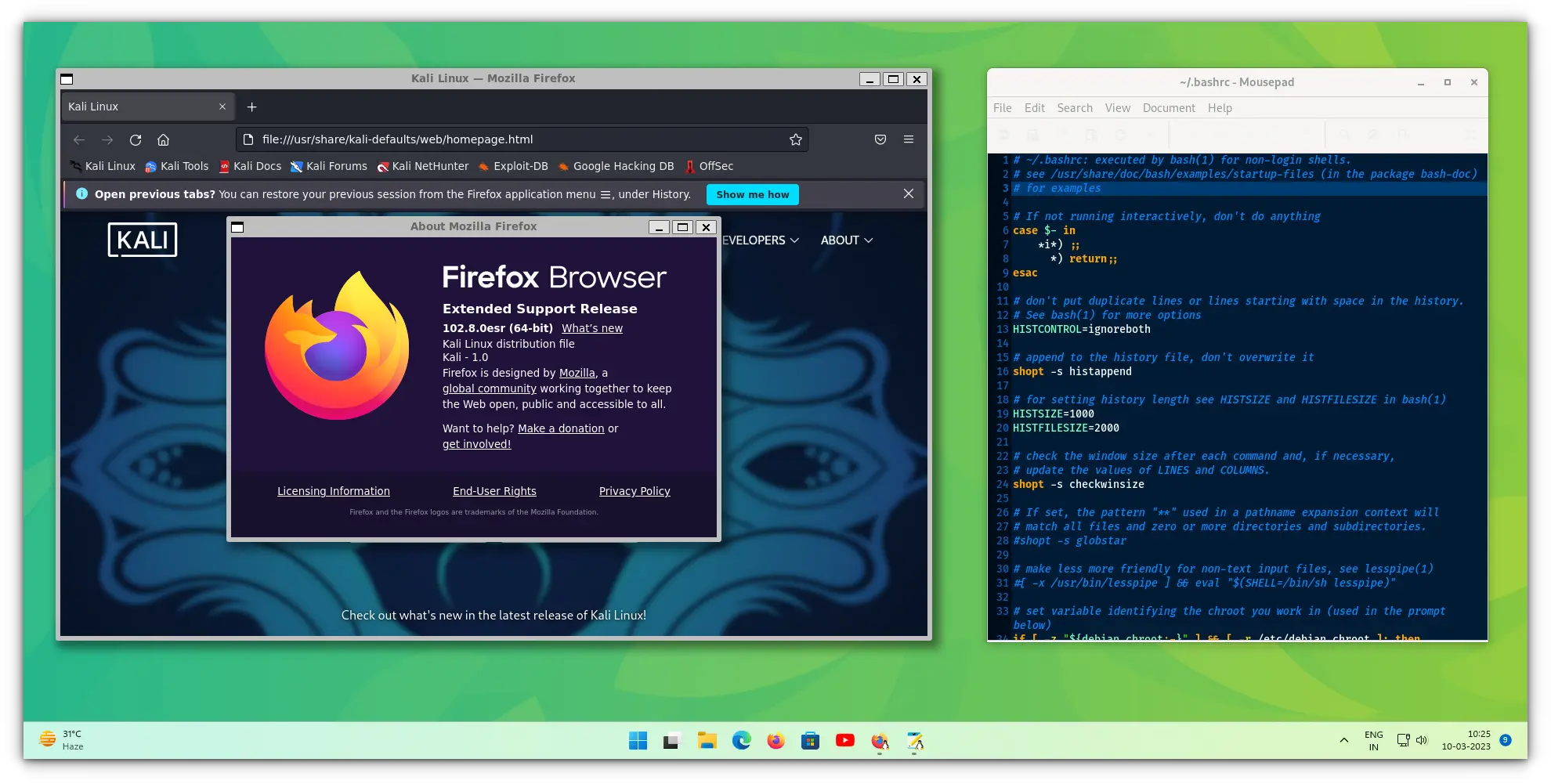
Refer to the official documentation for more Kali Linux modes available, like a full Kali Linux desktop, sound support, etc.
